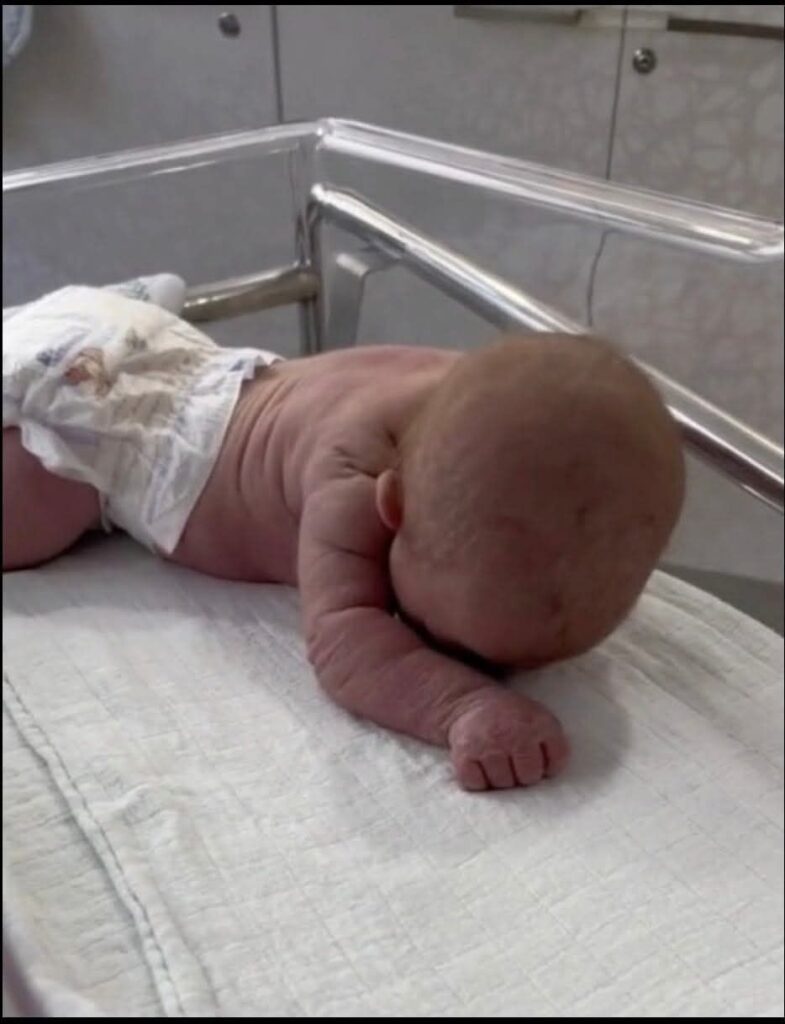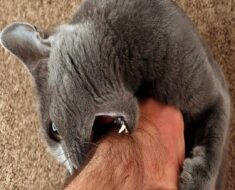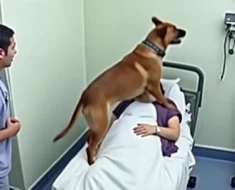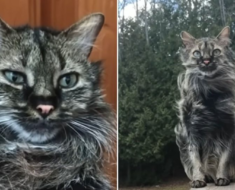No one in the delivery room expected anything out of the ordinary that morning. It was supposed to be a routine birth in a busy maternity ward where cries, cheers, and the steady rhythm of medical work filled the halls. But within seconds of one baby entering the world, everything shifted. A midwife gasped. A nurse froze mid-step. Even the doctor delivering the child went still, eyes fixed on the newborn curled against the blanket.

The baby—a perfectly healthy boy—had arrived crying, red-faced, and full of life. But what silenced the room was what he was holding in his tiny, clenched fist. It wasn’t a finger. It wasn’t the blanket. It was the very device designed to prevent his existence in the first place: his mother’s IUD.
The moment felt surreal. The doctor, Dr. Tran Viet Phuong of Hai Phong International Hospital in northern Vietnam, leaned in slowly, not wanting to disturb the boy’s grip. The IUD dangled from his tiny fingers, as if he had claimed it as proof of the impossible—proof that life sometimes tears through every barrier placed in its way.
The mother, still trembling from labor, stared in disbelief. Years earlier she had chosen an IUD hoping for a long, worry-free stretch without pregnancy. Yet now, here was her son, breathing steadily, clutching it as though dragging it out with him had been part of the plan. The device meant to stop him had become the first thing he held.
Someone whispered, “He was determined to be here.” Someone else murmured a prayer under their breath. The mother covered her mouth and cried—first from shock, then from a swelling sense of wonder as she realized just how incredible the moment was.
Dr. Phuong raised a hand and asked for a camera. He didn’t want to sensationalize the moment, but he knew it was significant. Rare. Symbolic. He snapped a single photograph that would eventually travel the world, but in that moment the room stayed quiet and reverent, as though everyone was afraid to break the spell.
The newborn gradually stopped crying. His tiny fingers opened and closed around the IUD as if he was exploring a strange object from a world he had just entered. His breathing smoothed out. His mother reached out and placed a trembling hand on his back. He instinctively shifted toward her touch.
What lingered wasn’t disbelief—it was awe. The kind that fills a room slowly, humbling even the most seasoned medical professionals. They had all seen complicated births, emergency cases, miracles and tragedies. But this was different. It felt like a statement, a reminder that for all our science and certainty, life still carries mysteries that refuse to be contained.
When the story left the hospital walls, the world reacted just as strongly. People saw the image—this tiny newborn holding a contraception device—and interpreted it through their own beliefs. Some called him a miracle child. Others said he was proof that destiny always finds a way. Some felt it was biology defying statistics. Others felt it was something guided by divine hands. But whether people viewed it through science, faith, or simple curiosity, one thing resonated across every reaction: the baby’s arrival felt meaningful.
Meanwhile, inside the hospital room, meaning wasn’t the first concern. Once the initial shock faded, the staff shifted into caring mode. Warm towels. Gentle checking. Skin-to-skin contact. The rhythm of routine returned, but a quiet wonder hung beneath every movement. The mother could hardly look away from him. She had expected an uneventful birth, maybe even feared complications. Instead she got a story that would follow her son for the rest of his life.
She asked the doctor the question everyone else was thinking: “How did this happen?”
Dr. Phuong explained cautiously—not wanting to dampen her wonder, but wanting her to understand. In rare cases, an IUD can shift out of its intended position, especially over several years. Pregnancy can still occur if the device moves, and depending on how it dislodges, the IUD may remain inside the uterus until labor. It wasn’t unheard of, but it was extraordinarily uncommon for the device to come out in the baby’s hand. That part was the real marvel.
The mother listened, absorbing the explanation, but her eyes stayed fixed on her son. She wasn’t interested in what went wrong with the IUD. She was thinking about what went right with him.
As the day went on, staff members who had been off shift asked to stop by and see the baby who arrived holding his own origin story. Nurses peeked in, smiling, whispering, taking in the strange sweetness of the moment. One of them said softly, “He came into the world holding proof of his own determination.”
Later that afternoon, after the initial whirlwind faded, the mother held him against her chest. She stroked his soft cheek and traced the curve of his tiny fingers. He had long since released the IUD, now stored away by the doctor for medical documentation, but the weight of that moment stayed with her.
She whispered to him, “You chose me. No matter what your beginning looked like, you fought your way here.”
He blinked slowly, as newborns do, his breaths small but steady.
The news spread across Vietnam, then across the globe. Headlines tried to exaggerate or dramatize the moment, but the truth was already powerful enough. The photograph captured something raw and unfiltered—an image that didn’t need embellishment to be extraordinary.
At the hospital, however, life continued with its steady rhythm. Babies were born. Families cried with joy. Nurses hustled in and out of rooms. Yet for the staff who witnessed that rare birth, the memory stayed with them, grounding them in the unpredictable beauty of their work.
Science can predict, prevent, and plan. But life? Life still has its own voice.
And that day, in that delivery room, it spoke loudly through the grip of a newborn’s hand.
Not with chaos. Not with danger.
But with wonder.
With possibility.
With a small, perfect cry announcing that he was here—not by accident, not by mistake, but in defiance of every obstacle designed to stop him.
A quiet reminder, witnessed by a handful of stunned doctors and nurses, that despite everything we think we control, life still finds its way through, stronger than expected, holding its future in the palm of a tiny hand.





